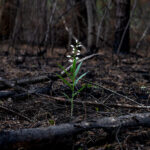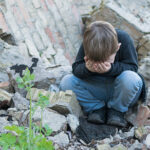With people regularly attending services each week at faith-based organizations around the world, these organizations must have plans in place to provide safe egress of large crowds of attendees from their buildings on a regular basis. Much can be learned from and implemented into such organizations to provide greater community resilience.
The world of emergency response is ever expanding with governmental responsibilities to communities increasing on an almost daily basis. However, whether the emergency is naturally occurring or human-caused, there are times when the governmental agencies that are set up to provide help to communities will be overwhelmed. It is during times like this when citizenry, through established volunteer-based groups such as the Community Emergency Response Team (CERT) and the Medical Reserve Corps (MRC), swing into action to act as an adjunct to local, state, regional, territorial, tribal, and federal government response agencies.
Statistical Significance of Congregations
When even more assistance is necessary, faith-based organizations (FBOs) are a good resource to be used in conjunction with governmental responders. According to the Pew Research Center’s Forum on Religion & Public Life, an estimated 5.8 billion adults and children are religiously affiliated around the globe, representing 84 percent of the 2010 world population of 6.9 billion. The largest religions are: 2.2 billion Christians (32 percent), 1.6 billion Muslims (23 percent), 1 billion Hindus (15 percent), nearly 500 million Buddhists (7 percent), and 14 million Jews (0.2 percent) around the world as of 2010. In addition, more than 400 million people (6 percent) practice various folk or traditional religions, including African traditional, Chinese folk, Native American, and Australian aboriginal religions. An estimated 58 million people – slightly less than 1 percent of the global population – belong to other religions, including the Baha’i faith, Jainism, Sikhism, Shintoism, Taoism, Tenrikyo, Wicca, and Zoroastrianism, to mention just a few.
The faith-based community perhaps may be the single greatest representative cross-section of a community, and comprises roughly 350,000 congregations in the United States. FBOs are generally active in the disaster phases of preparedness, response, and recovery. Preparedness includes activities such as creating disaster plans, conducting training or educational activities, or collecting disaster supplies. Response activities generally include immediate disaster relief and mass care – for example, water, food, and safe shelter – but, in the case of some groups such as CERT and MRC, they can include lifesaving activities such as search and rescue, triage, and first aid or basic life support.
Moreover, these organizations may be better able to reach: individuals with access and functional needs: the economically disadvantaged; groups with limited English proficiency or low literacy; those with certain medical issues or disabilities; and groups characterized by cultural, geographic, or social isolation. In addition to having close ties to their communities and having the mission of helping the most vulnerable, FBOs are recognized as trusted agents for the communities that they serve (in comparison to government agencies). FBOs also have access to resources for, and from, the community – for example, facilities, volunteers, a donor base, and others. These resources can be critical to any local government agency’s efforts to help its community prepare for, respond to, and recover from a disaster.
Megachurches Filling Critical & Daily Operation Gaps
There are multiple ways to establish FBOs as critical elements in preparing for and responding to the many emergencies that could confront communities. Following are examples of what some jurisdictions have done in regard to moving this asset into operational mode:
Prince Georges County (Maryland) uses multiple faith-based organizations in its preparedness and planning for public health emergencies. With a population of almost 1 million and a preponderance of churches and so-called “megachurches” – defined as having 2,000 or more people in average weekend attendance – it was intuitive to reach out to these organizations to assist in emergencies. Members of these organizations have been trained to set up their houses of worship to act as closed points of distribution (PODs) during an emergency where antibiotics would need to be dispensed to their communities’ populations. Taking this a step further, various members of the congregation – both medical providers and those with no medical background – have been trained to staff these closed PODs with limited support needed from the county Health Department and county Office of Emergency Management. Additional perspective on the utilization of FBOs in the context of public health preparedness comes from NACCHO’s Advanced Practice Centers.
The state of Missouri uses a unique program, highlighting FBOs, to assist in sheltering those affected by various emergencies including flooding, hurricanes, and the like. Various FBOs throughout the state have developed safety teams and all-hazards plans and made themselves an element in their local and county emergency operations plans. Interested volunteers from the FBOs are taught about the safe handling of food after a disaster, psychological first aid, emergency planning, and even what is involved in long-term recovery after an incident. Furthermore, although FBO facilities are used primarily as shelters and food stations, many continue their religious services to help people maintain some continuity in their lives after suffering through a disaster.
It is clear from the examples mentioned above that FBOs can be a critical element in the various phases of emergency management, but there are additional areas that FBOs can be used based on community need:
Using FBOs during the preparedness phase to train and work with government staff and other volunteers to learn how to maintain relationships with the community, allow them to assist in brainstorming ways to do better outreach, act as conduits for building trust and communications, etc.
Using FBOs during the preparedness phase to help brainstorm ideas for how to reach individuals that have access and functional needs in the most efficient, trustworthy, and quick way – but most importantly how to identify these groups now and maintain that throughout response and recovery efforts.
Using FBOs to help with logistics planning – for example, megachurches often have the task multiple times per week of funneling hundreds (or thousands) of people and cars in and out of services. Besides examining how they do this efficiently and with what tactics, these same operational tactics can be used in a mass-dispensing situation. Also, many FBOs may have large events like charity drives or other mass gatherings. Emergency planners should be asking, “What do they do for planning, logistics, demobilization, etc., and how can these be used in an emergency?”
FBOs can even serve to provide community services – for example, meals, medication pick up/drop off, behavioral health support, spiritual health support, pet care, childcare – for those in isolation or quarantine. They should be included in emergency operations plans as potential partners that can help provide these services during events requiring nonpharmaceutical interventions.
On the Ground & Ready to Move
Hurricanes Katrina and Rita in 2005 showed how effective FBOs could be in regard to emergency preparedness, response, and recovery efforts following a large-scale incident. Since then, there has been a concerted effort made on both federal and state levels to ensure that these nongovernmental organizations have been folded into various plans and exercises to ensure overall readiness. During large-scale events, governments could potentially require time to mobilize, gather personnel and supplies, and move these resources to the affected area. In contrast, the FBOs are already there on the ground, and in a position to immediately assist those in need. More information is available at the Homeland Security Institute document on Heralding Unheard Voices: The Role of Faith-Based Organizations and Nongovernmental Organizations During Disasters, 18 December 2006.
Emergency preparedness professionals would be wise to see where the gaps in their planning efforts lie and use these organizations to assist in filling those gaps, include FBOs in their training and exercise cycles, and take a holistic approach in understanding the unique challenges that FBOs may face as well as how to overcome these challenges. The effort on the front end will be paid off multifold during a crisis situation.

Raphael M. Barishansky
Raphael M. Barishansky, DrPH, is a public health and emergency medical services (EMS) leader with more than 30 years of experience in a variety of systems and agencies in positions of increasing responsibility. Currently, he is a consultant providing his unique perspective and multi-faceted public health and EMS expertise to various organizations. His most recent position prior to this was as the Deputy Secretary for Health Preparedness and Community Protection at the Pennsylvania Department of Health, a role he recently left after several years. Mr. Barishansky recently completed a Doctorate in Public Health (DrPH) at the Fairbanks School of Public Health at Indiana University. He holds a Bachelor of Arts degree from Touro College, a Master of Public Health degree from New York Medical College, and a Master of Science in Homeland Security Studies from Long Island University. His publications have appeared in various trade and academic journals, and he is a frequent presenter at various state, national, and international conferences.
- Raphael M. Barishanskyhttps://domesticpreparedness.com/author/raphael-m-barishansky
- Raphael M. Barishanskyhttps://domesticpreparedness.com/author/raphael-m-barishansky
- Raphael M. Barishanskyhttps://domesticpreparedness.com/author/raphael-m-barishansky
- Raphael M. Barishanskyhttps://domesticpreparedness.com/author/raphael-m-barishansky

Audrey Mazurek
Audrey Mazurek, MS, has worked at all levels of government for nearly 20 years in public health and healthcare preparedness, emergency management, and homeland security. She was a program manager with the National Association of County and City Health Officials (NACCHO) Project Public Health Ready program. She supported the U.S. Department of Homeland Security in the development of an accreditation and certification program for private sector preparedness. She also served as a public health emergency preparedness planner for two local public health departments in Maryland, where she developed over 30 preparedness and response plans, trainings, and exercises. She is currently a director of public health preparedness with ICF, primarily supporting the U.S. Department of Health and Human Services, Assistant Secretary for Preparedness and Response’s (ASPR) Technical Resources, Assistance Center, and Information Exchange (TRACIE) program as the ICF program director.
- Audrey Mazurekhttps://domesticpreparedness.com/author/audrey-mazurek
- Audrey Mazurekhttps://domesticpreparedness.com/author/audrey-mazurek
- Audrey Mazurekhttps://domesticpreparedness.com/author/audrey-mazurek
- Audrey Mazurekhttps://domesticpreparedness.com/author/audrey-mazurek






